The holiday season has nearly arrived, and who doesn’t like to celebrate holidays with some delicious, flaky pies?
But the pie is not just about the filling or the decoration. These are most certainly important, but so is the base of the dish. Yes, we are about the pie crust.
As a fine delicacy, it is important to make the perfect crust. But don’t worry if you do not have the regular ingredients for it – we got you all covered.
Dive in to find out how to make pie crust without key ingredients. Spoiler Alert: Some of these ingredients are even better!
Flour – the King of All Ingredients
It cannot be denied how important flour is in making all pastries, not just pie crusts. As the main ingredient, it is hard to find an alternative to it.
However, it is hard only if you’re considering regular whole wheat flour or cake flour to make your pie crust. Currently, there are many other flour options that will make your pie crusts just as flaky, and some of these are even healthier!
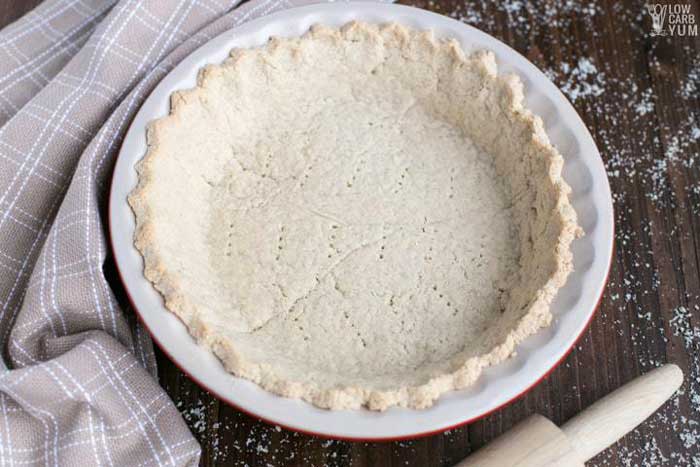
Some healthy alternatives for the regular all-purpose flour are oatmeal flour, coconut flour, barley flour, buckwheat flour, spelt flour, rice flour, etc. In the case of barley and oatmeal, you can grind them into a powdery finish by using a grinding machine or tool.
Other than those options, nut flours, especially the almond ones, are used. They are a little expensive and tricky to use. Since the crust made of this flour is fragile, you will need to press the dough into the pan firmly.
Butter – But What’s Better?
Another prime ingredient that goes into crust making is the fat – typically, it’s butter. Butter is the reason why the pie crust literally melts into your mouth. It’s also responsible for the flaky texture of it.
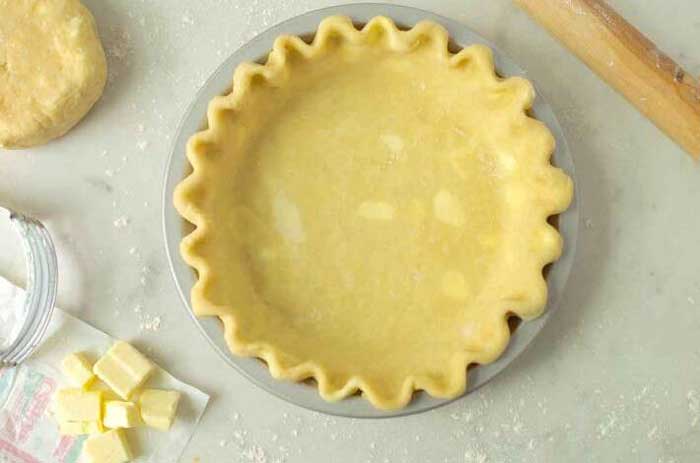
Since it is such an essential ingredient, how would you replace it? Well, to answer your question, here are some alternatives to the use of butter.
- Vegetable Shortening: Vegetable shortening is a very good dairy-free option. Since it is an absolute fat and has a high melting point, it is perfect for pie crusts.
Because of its high fat density, you typically need to use a lesser amount of shortening than you would have if you used butter.
- Oil: To be honest, oil is not the best option if you want to produce flaky crusts. But hey, it’s still a great alternative.
When using oil, you do not need to roll your dough. This will keep the surface of the dough soft and smooth. Even in this case, you need to use less quantity in comparison to butter. Remember to add in the oil gradually after mixing all the ingredients.
- Lard: The usage and characteristics of lard are almost similar to that of vegetable shortening.
However, the only downside is that it can leave an unwanted flavor of pork fat in the crust.
Sugar for That Sweet Tooth
You do not necessarily need sugar in your pie crust. The whole point of this discussion is to help make a crust with fewer ingredients. And sugar is just an add-on.
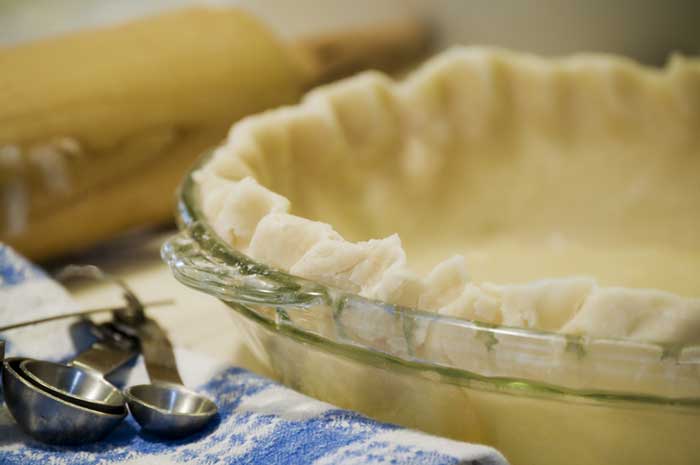
However, if you must add some sweetness to your crust, you can do it with brown sugar, icing sugar, a little honey, or an artificial sweetener.
Eggs – Do You Really Need Them?
It is a common misconception that pie crusts require eggs. Yes, it adds to the texture, and egg yolks really help make the crust rich in flavor.
But can you do without them? Yes. Just like sugar, eggs can be easily discarded in this recipe. You do not need the eggs if you coat the flour and the fat properly.
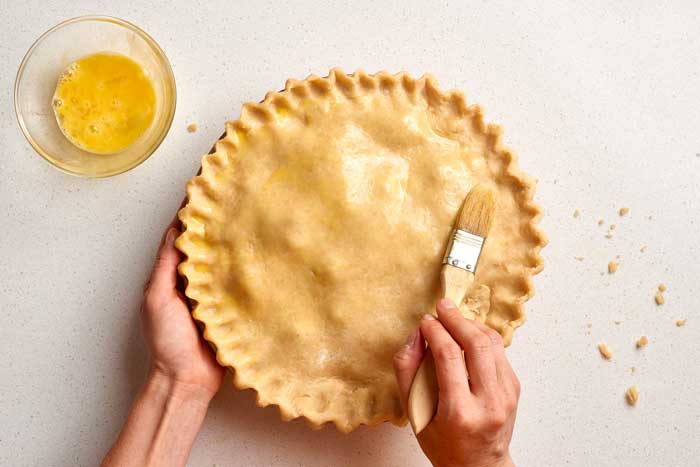
There are several vegan eggless recipes out there. Try those recipes, or balance your crust ingredients with water if you merely skip the eggs.
Salt to Taste!
In Shakespeare’s famous play “King Lear,” when the king asks his daughter how much she loved him, she compares her love to salt. The essence of salt can be found not only in literature but also in our everyday lives.
If you carefully think about it, no savory dish can be imagined without salt. Even in a pie crust, this magic ingredient brings distinctive flavor. It is mixed in to balance the bland taste of the crust.
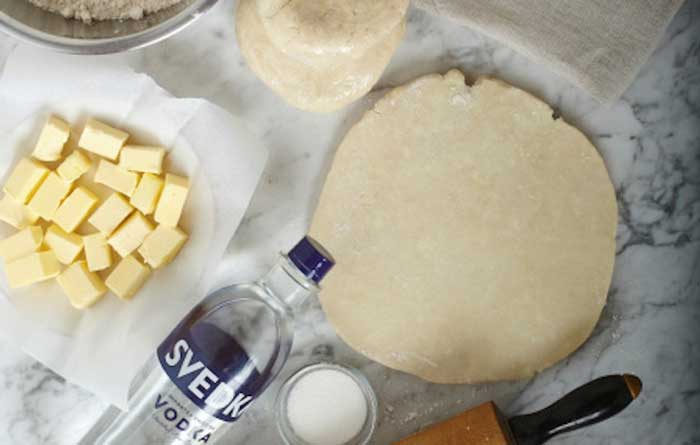
Surprisingly enough, salt is not a key ingredient of pie crusts. It is quite optional, and even without it, the texture of the pie crust will turn out just fine.
If you do want salt substitutes, you can try out lemon zest, cinnamon, cumin, or mint. These plant extracts are full of flavor, and they will also reduce your sodium consumption.
Liquid & Its Variations
There are different hydrators you could use to make the dough perfect. Water is the primary liquid used to make a pie crust. However, if you want to take things up a notch, you can add in flavors using different liquids.
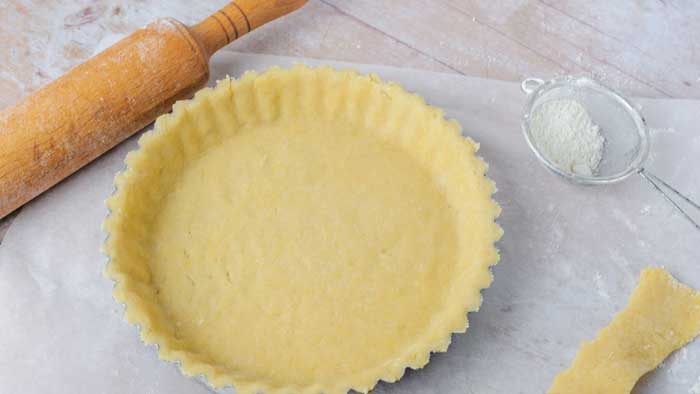
Here are some innovative liquid options for that delicious crust!
- Vinegar: Vinegar is a luscious substitute for water. Because it has mild acidic characteristics, it will keep your pie crust flaky. It is also a better option compared to the other alcohols because of its bittersweet flavor.
- Dairy Liquid: Any dairy liquid is much more flavored than vinegar. You could use yogurt, sour cream, buttermilk, ice milk, etc.
For an authentic touch, you could try drinks like Kumis or Lassi. Remember to be careful about the amount you include, as dairy liquids are thicker in consistency.
- Nut Milk: Nut kinds of milk like almond milk and coconut milk are great substitutes for water. However, these are thick in consistency like dairy liquids as well.
- Others: Other options include soy milk, oat milk, rice milk, etc., plant-based milk products.
Always remember that no matter what your hydrating factor is, its temperature should always be ice cold.
Tools You Really Need
Since you’re making a pie crust, let us assume that you know a thing or two about baking. You must also know about the basic kitchen equipment you will be needing. However, there are also some “pie special” tools that are often used.
Now some of these tools are actually handy, while the others are just gimmicky. Some of the special tools specifically needed for pie crust are a pie pan, rolling pin, pastry cutter, and pin weights.

Common alternatives to pie pans are cake pans and pizza pans. These are multi-use and serve the same purpose. Again, instead of a rolling pin, use can use bottles, glasses, or cans of similar shape.
Pastry cutters are mostly needed for decorations, so you could use forks and knives instead of them too. As for pin weights, dried beans, sugar, marbles, etc., can be used. You could also use a blob of the pie itself.
Get Creatively Crusty!
Throughout this entire article, we talked about substitutes for ingredients. But what if we substitute the entire pie crust?
Crusts aren’t just made with your regular kitchen ingredients. You can use some tasty yet convenient options instead.
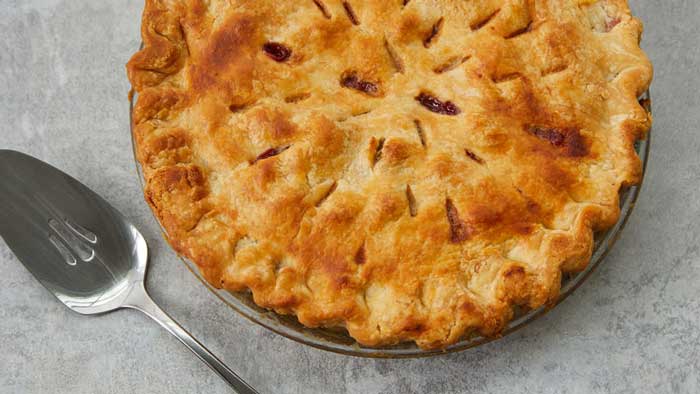
Some common alternatives to regular crust recipes are the usage of Graham crackers, rice cereal, cookie crumbs, cookie dough, oatmeal, coconut, etc.
But if you really want to experiment with flavors and make that restaurant-style pie, we suggest you also try cookies made of chocolate (Oreo is a favorite!) as well as butter. Tart bases and waffle cones are great combinations for pie recipes too!
Get in the Kitchen!
Our mouths are already watering. Isn’t yours? Making pie crusts can definitely be a tedious job – but now you know that not having certain ingredients can’t stop you.
You already know how to make pie crust without key ingredients. Always remember that cooking is all about innovations and trying out new things. So, don’t be afraid to get creative!
Now, go to your kitchen and get started. Make the perfect pie crusts and feed everyone you know!

